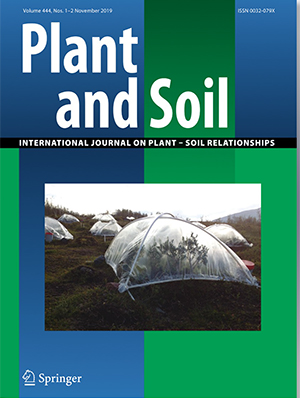Loss of CO2 from subarctic heath ecosystem under climate change treatment
Results on ecosystem CO2 fluxes measured through the whole year in plots in subarctic heath exposed to 13 years of increased summer temperature and leaf litter addition have been published in Plant and Soil, and the study is highlighted on the front cover of the November 2019 issue of the Journal.
 The work was done by Cenperm scientists Nynne Rand Ravn and Anders Michelsen together with Tora Finderup Nielsen, and took place in a long-term field experiment in Subarctic heath, Northern Sweden. The photo shows in the front a warming plot with open top tent, and in the background other warming plots, control plots and plots receiving additional leaf litter. The tents are in place during summer, simulating intensified summer warming, and with birch litter addition simulating increased litter input from an expanding birch forest. The CO2 fluxes were measured throughout the whole year in order to estimate the carbon balance and its components (photosynthesis and ecosystem respiration).
The work was done by Cenperm scientists Nynne Rand Ravn and Anders Michelsen together with Tora Finderup Nielsen, and took place in a long-term field experiment in Subarctic heath, Northern Sweden. The photo shows in the front a warming plot with open top tent, and in the background other warming plots, control plots and plots receiving additional leaf litter. The tents are in place during summer, simulating intensified summer warming, and with birch litter addition simulating increased litter input from an expanding birch forest. The CO2 fluxes were measured throughout the whole year in order to estimate the carbon balance and its components (photosynthesis and ecosystem respiration).
This study suggests that in a changed climate such subarctic heath ecosystems will increase respiration slightly more than photosynthesis and as a net effect lose more carbon to the atmosphere. It furthermore shows the significance of CO2 fluxes outside the growing season and demonstrates a legacy effect of increased summer warming on CO2 emission in the cold season.
Original article
Finderup Nielsen T., Ravn N. R., Michelsen A. (2019) Increased CO2 efflux due to long-term experimental summer warming and litter input in subarctic tundra – CO2 fluxes at snowmelt, in growing season, fall and winter. Plant and Soil 444:365-382.
